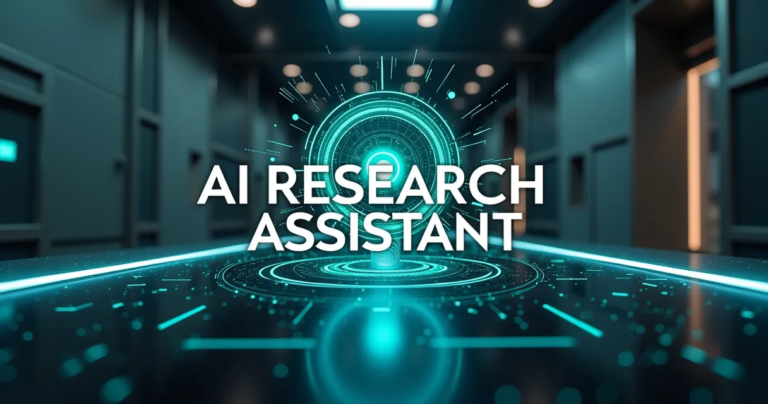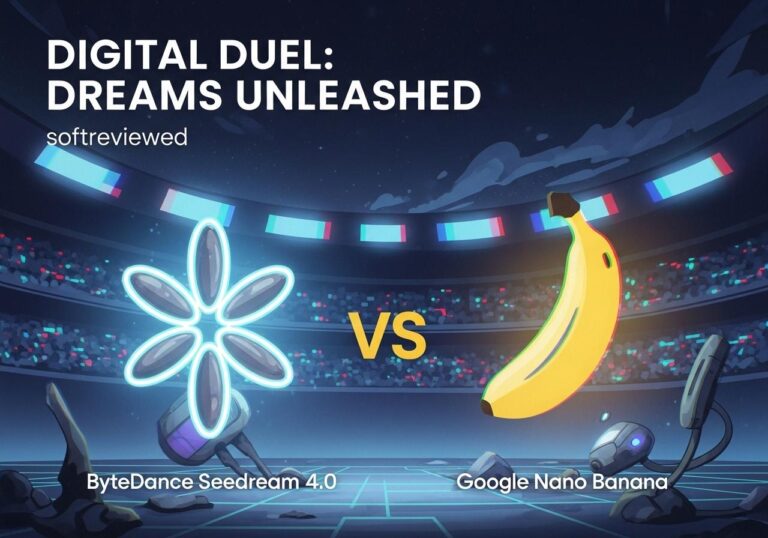OpenAI’s Deep Research Launch 🔬
Revolutionary AI-powered research assistant transforming complex internet research tasks
🚀 Launch of Deep Research
OpenAI introduces “Deep Research,” powered by the innovative o3 reasoning model, designed to serve as your personal research assistant for complex internet research tasks.
💎 Availability & Access
Initially exclusive to ChatGPT Pro users with 100 monthly queries, with planned expansion to Plus, Team, and Enterprise packages.
🔍 Advanced Functionality
Synthesizes text, images, and PDFs from across the internet, delivering comprehensive reports with detailed citations and source references.
⚡ Enhanced Efficiency
Completes research tasks in minutes that would take humans hours, boosting productivity for professionals in science, engineering, and finance.
🌍 Global Rollout
Currently unavailable in UK and EU regions, with planned expansion and broader platform integration by end of February.
🎯 AGI Development
Represents a crucial milestone towards Artificial General Intelligence (AGI), with potential for generating original scientific research.
Imagine having an AI research assistant that can sift through countless online sources, analyze complex information, and generate a comprehensive report – all in a matter of minutes. That's the promise of OpenAI's Deep Research, a new AI agent poised to revolutionize how we conduct online research. Powered by a version of the upcoming o3 model, Deep Research is designed to go beyond the capabilities of standard browsing tools. It offers a more profound way to explore and understand complex topics. This new approach to online investigation offers immense potential for professionals, researchers, and curious individuals alike. This innovative tool, leveraging advanced reasoning, has implications across numerous domains, from scientific analysis to personal shopping. Deep Research is setting a new standard for efficient and insightful information retrieval. In addition, Deep Research seamlessly integrates various data formats, enabling users to engage with multimedia content alongside traditional text sources. For instance, when researching topics like climate change, users can quickly generate a detailed overview, such as stanford’s storm overview, to enhance their understanding. This holistic approach empowers users to gather insights from diverse perspectives, making informed decisions more achievable than ever.
What Exactly is Deep Research? 🧐
Deep Research isn't just another search engine; it's an AI-powered agent engineered to perform in-depth, multi-step research on the internet. Unlike traditional search methods, Deep Research can autonomously navigate the web, analyze vast amounts of data, and synthesize findings into detailed reports. Think of it as a sophisticated researcher, capable of independently gathering, interpreting, and connecting information from hundreds of online sources. It uses a version of the upcoming OpenAI o3 model to understand the nuances of the data it encounters. This enables it to create thorough, documented, and clearly cited reports on complex topics. It moves beyond basic browsing capabilities and instead acts as an intelligent researcher.
Deep Research vs. ChatGPT: What's the Difference? 🤔
You might be wondering, "Doesn't ChatGPT already browse the internet?" While ChatGPT can access and process information online, Deep Research takes it a step further. Standard ChatGPT interactions provide quick answers. Deep Research, however, conducts multi-step investigations, referencing and analyzing multiple sources to produce structured reports. For example, if you were researching the best car to buy, Deep Research would perform in-depth analysis, comparing reviews, costs, and other important details from various websites. This multi-step process enables it to tackle complex research projects that might be too challenging for a standard chatbot interaction. Deep Research is designed for tasks requiring extensive data collection and synthesis, whereas ChatGPT is primarily focused on conversational interactions and quick information retrieval.
How Does Deep Research Actually Work? ⚙️

Deep Research operates using an advanced approach that goes beyond simple keyword searches. Here’s a breakdown of how it works:
- Autonomous Web Navigation: The agent browses the internet independently, utilizing its advanced search and navigation capabilities.
- Information Interpretation: It analyzes various types of data, including text, images, and PDF documents.
- Reasoning and Synthesis: Deep Research applies its reasoning capabilities to understand and synthesize information from multiple sources, finding relationships between data points.
- Dynamic Adaptation: The system is designed to adjust its research approach as new information is encountered. It pivots when necessary to ensure it's on the right path, and it can backtrack and reconsider its direction, if required.
- Report Generation: The final result is a thorough, documented, and clearly cited report.
This process involves intricate steps, ensuring a detailed analysis.
The Power Behind Deep Research: The o3 Model 🧠
The impressive capabilities of Deep Research are powered by the upcoming OpenAI o3 model. This model is specifically optimized for web browsing and data analysis, making it a key component of the Deep Research system. The o3 model leverages advanced reasoning capabilities and chain-of-thought processes to enable the system to handle complex research tasks. It differs from previous models through its greater emphasis on structured analysis and multi-step reasoning. This results in a more comprehensive and insightful research outcome. It is designed to perform more complicated tasks than previous iterations
Who Can Benefit From Deep Research? 🎯
Deep Research is designed to help a wide array of users, including:
- Professionals: 💼 Those in complex, information-heavy fields such as finance, science, policy, and engineering can benefit from well-cited, structured reports.
- Business Strategists: 📈 Individuals conducting market research, competitive analysis, and trend forecasting can use it to gain valuable insights.
- Researchers and Students: 📚 Those gathering information from multiple sources for assignments, research papers, and other academic purposes will find it an invaluable tool.
- Discerning Consumers: 🛍️ Shoppers can get personalized recommendations for complex purchases such as cars, appliances, and furniture.
- Anyone Seeking Comprehensive Information: Individuals curious about specific topics can use Deep Research for in-depth understanding.
Deep Research in Action: Use Cases & Real-World Examples 🌍
Here are some examples of how Deep Research can be applied in various scenarios:
- Scientific Research: 🔬 A researcher studying climate change could use Deep Research to compile data from multiple scientific publications, government reports, and news articles, quickly developing a comprehensive picture.
- Financial Analysis: 📊 A financial analyst can research market trends, analyze company performance, and gather insights from diverse financial sources to make well-informed investment decisions.
- Market Analysis: 📈 A business strategist could use it to analyze competitor data, market trends, and consumer preferences.
- Academic Research: 🧑🎓 A student needing to write a paper on the history of AI could utilize it to research and synthesize information from various books, articles, and online resources.
- Personal Shopping: 🚗 A consumer planning to buy a new car could use Deep Research to compare different models, reviews, and prices.
- Linguistics Research: 🗣️ Researchers can delve into the nuances of language development and transformation.
- Healthcare: ⚕️ Professionals can stay informed on the latest medical research and breakthroughs, enabling them to enhance patient care.
Deep Research: Navigating the Challenges 🚧
Despite its potential, Deep Research has its challenges:
- Accuracy of Information: The reliance on web sources means accuracy can be impacted by misinformation or outdated data.
- Computational Resources: Conducting complex research can be computationally intensive, which might lead to longer processing times.
- Bias in Data: AI models may reflect biases in the data they are trained on, which could affect results if not properly accounted for.
- Limited Scope: Currently, Deep Research is only available for Pro users in ChatGPT.
- Up-to-Date Information: Although it can access the internet, it can sometimes struggle with up-to-date accuracy when compared to real-time search engines.
Despite these challenges, ongoing development is helping to improve the overall effectiveness and reliability of Deep Research.
Where is Deep Research Headed? Charting its Trajectory 🚀
The capabilities of Deep Research are expected to significantly expand. Here are some potential trajectories:
- Enhanced Reasoning: Future iterations are expected to further enhance the reasoning capabilities of the o3 model.
- Improved Accuracy: Efforts are underway to improve the system's ability to handle misinformation and ensure greater accuracy.
- Wider Accessibility: It's likely that Deep Research will become more accessible to a wider range of users in the future.
- Integration with other tools: Deep Research is expected to integrate with other AI tools to increase its versatility and range of application.
- Advanced Data Handling: It will be equipped to analyze a greater diversity of data types.
- Real-time analysis: The system will likely incorporate real-time data analysis, which will enhance the timeliness of the information it provides.
These developments will result in more versatile, reliable, and efficient research capabilities.
The Future of Research is Here: Deep Research's Impact 💡
Deep Research is not just a tool; it represents a shift in how we approach online information gathering. The ability to conduct comprehensive research in minutes, not hours, opens doors to new discoveries and quicker insights. It promises to reshape the way professionals in multiple sectors conduct their work. By democratizing access to advanced research tools, Deep Research is poised to empower individuals with the information they need to make more informed decisions. Its ability to synthesize large volumes of complex information will be crucial to accelerating progress in numerous fields. Its impact will likely ripple through our daily lives, reshaping how we explore and comprehend the world around us. This is a significant step toward more autonomous and efficient AI-powered research.
AI Research Assistant Performance Metrics
This visualization compares key metrics of OpenAI’s research assistant capabilities and impact on academic research workflow.







